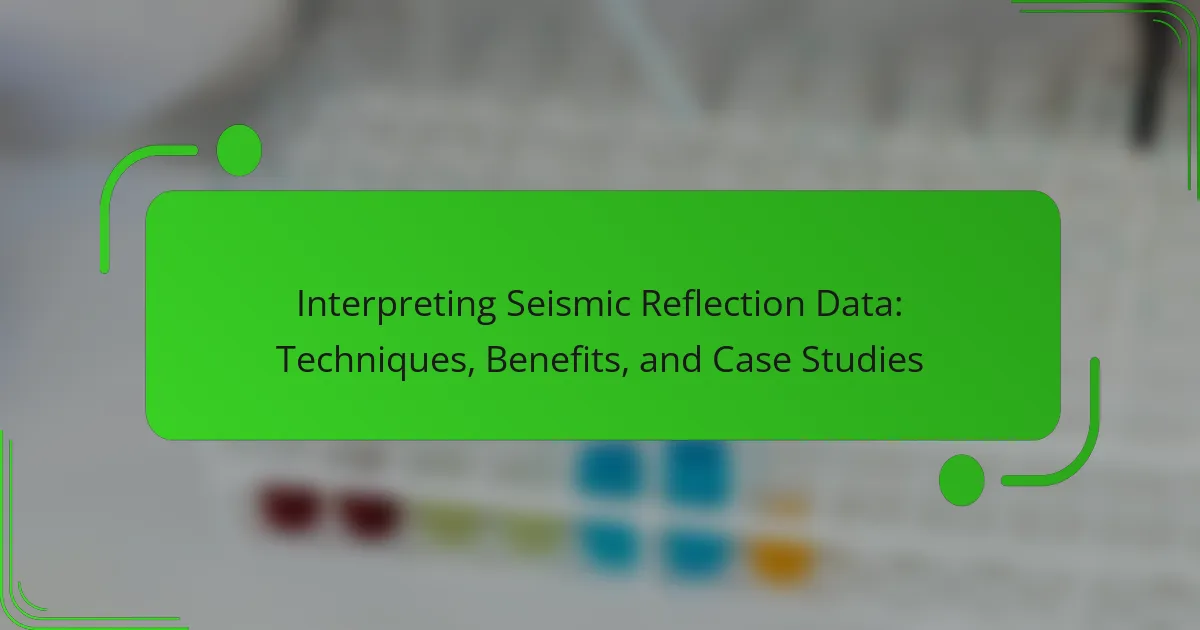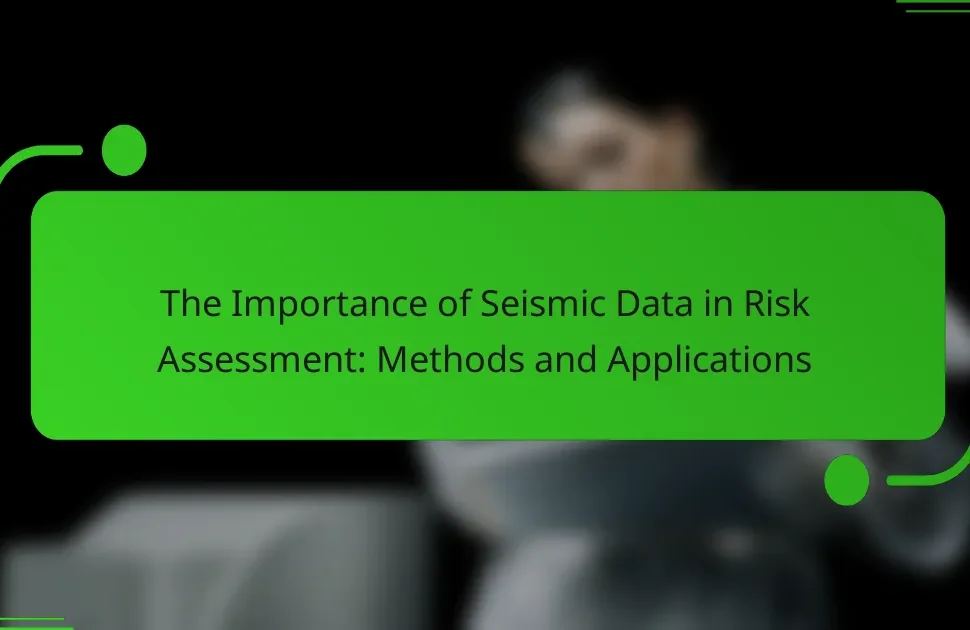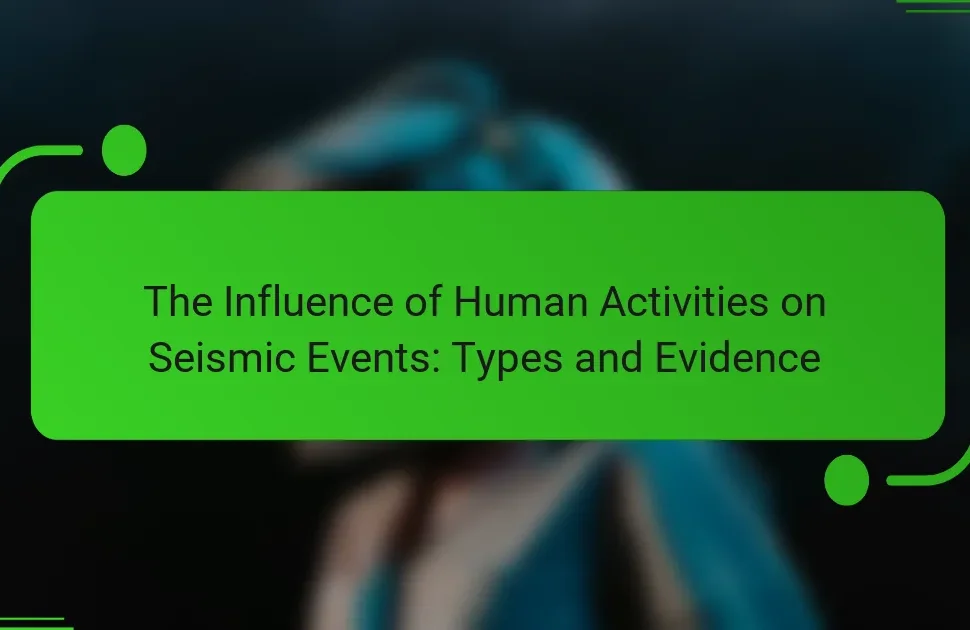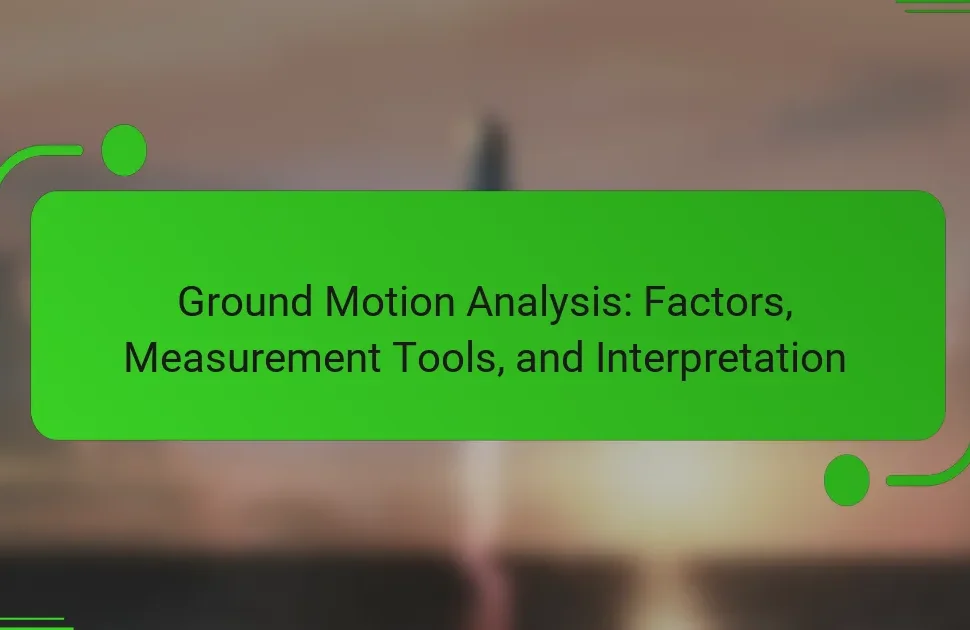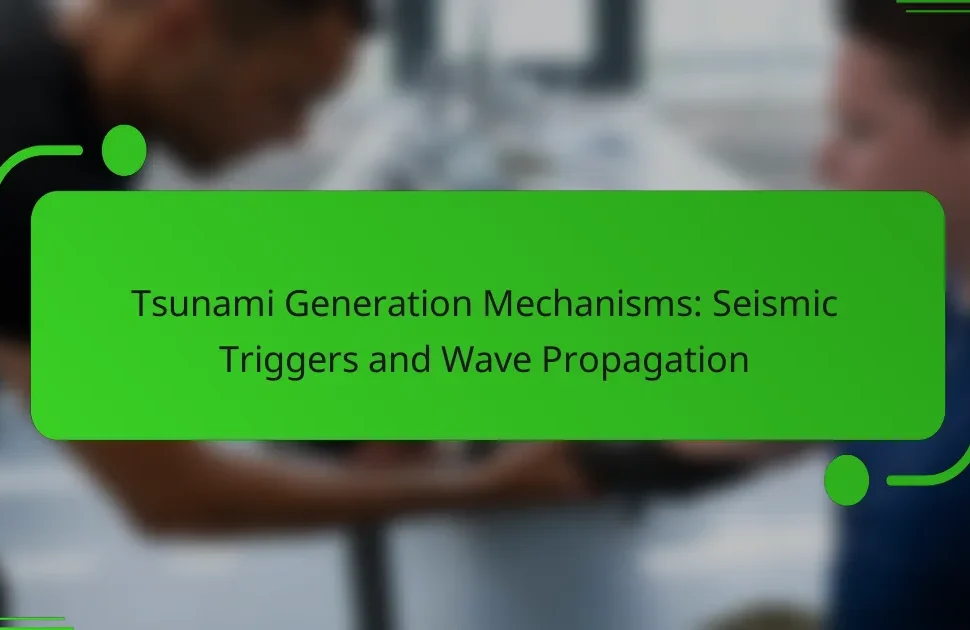Seismic reflection data refers to the information obtained from seismic waves that bounce off subsurface geological structures, primarily utilized in geophysical surveys to map the Earth’s interior. This article delves into the various techniques for interpreting seismic reflection data, including seismic stratigraphy, amplitude versus offset (AVO) analysis, and time-depth conversion. It highlights the benefits of this data interpretation, such as enhanced subsurface imaging for oil and gas exploration, assessment of natural hazards, and support for environmental studies. Additionally, the article discusses the role of advanced computer algorithms in improving data analysis and interpretation, making seismic reflection data an essential tool in geosciences.
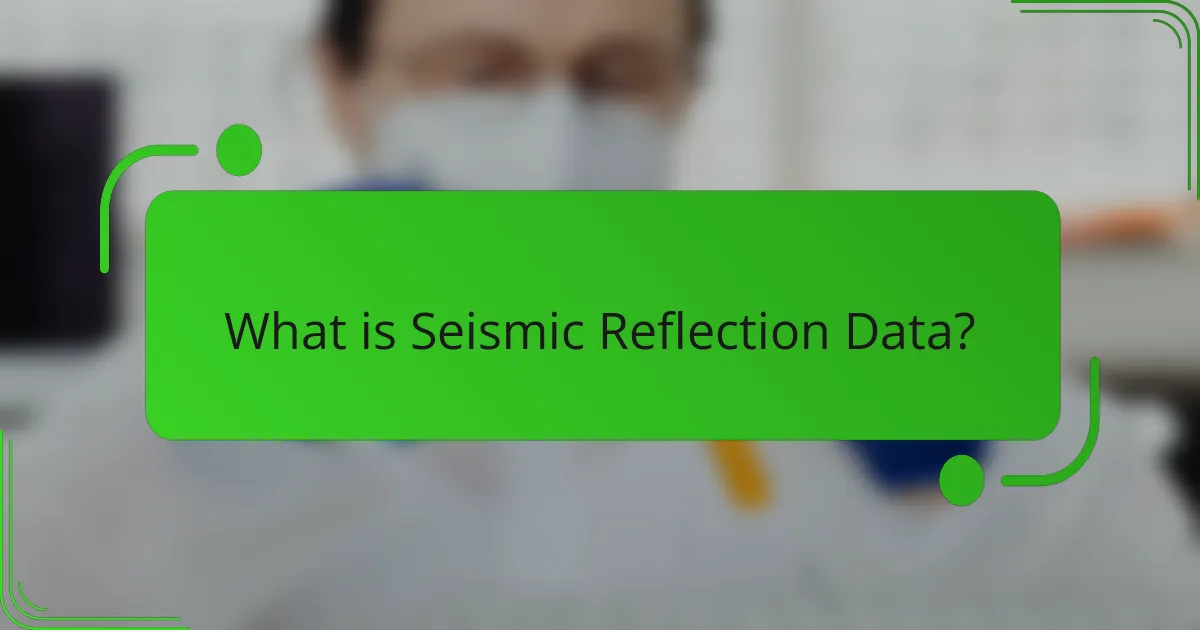
What is Seismic Reflection Data?
Seismic reflection data is information gathered from seismic waves that reflect off subsurface geological structures. This data is primarily used in geophysical surveys to map the Earth’s subsurface. Seismic waves are generated by sources such as explosions or vibrational equipment. When these waves encounter different rock layers, some of the energy reflects back to the surface. The time it takes for the waves to return provides insight into the depth and characteristics of the geological formations. This technique is crucial in oil and gas exploration, as well as in environmental studies. The accuracy of seismic reflection data can be verified through drilling and other geological assessments.
How is Seismic Reflection Data collected?
Seismic reflection data is collected using a method that involves generating seismic waves and recording their reflections. This process typically starts with the deployment of a seismic source, such as a dynamite charge or a vibroseis truck, which generates waves that travel through the Earth’s subsurface. As these waves encounter different geological layers, some of them reflect back towards the surface.
Geophones or hydrophones are then used to detect these reflected waves. The data collected by these sensors is recorded and analyzed to create a subsurface image. The timing of the reflections helps determine the depth and characteristics of the geological formations. This method is widely used in oil and gas exploration, as well as in environmental studies.
The effectiveness of seismic reflection data collection is supported by its ability to provide detailed images of subsurface structures. It allows for the identification of potential reservoirs and geological hazards.
What technologies are used in the collection of Seismic Reflection Data?
Seismic reflection data is collected using several key technologies. These include geophones, which detect ground vibrations. Hydrophones are used for underwater seismic surveys. Seismic sources, such as dynamite or air guns, generate waves. Data acquisition systems record the reflected waves. Advanced processing software analyzes the collected data. Additionally, GPS technology ensures accurate positioning of equipment. These technologies work together to create detailed images of subsurface structures.
What processes are involved in gathering Seismic Reflection Data?
Seismic reflection data gathering involves several key processes. First, a seismic source generates waves, typically using explosives or vibrators. These waves travel through the Earth and reflect off various geological layers. Next, geophones or hydrophones detect the reflected waves at the surface. The recorded data is then digitized for analysis.
Data processing follows, which includes filtering, stacking, and migration to enhance clarity. Finally, interpretation of the processed data reveals subsurface structures. This method is widely used in oil and gas exploration, providing critical insights into geological formations.
Why is Seismic Reflection Data important in geological studies?
Seismic Reflection Data is crucial in geological studies because it provides detailed images of subsurface structures. This data allows geologists to identify rock layers, faults, and potential resources like oil and gas. It enhances understanding of geological formations and their properties. Seismic reflection techniques use sound waves to map these structures. The method is non-invasive and can cover large areas efficiently. Studies show that seismic data can significantly reduce exploration costs. For instance, it has been used in successful oil exploration projects globally. This data is also essential for assessing earthquake risks and understanding tectonic processes.
What insights does Seismic Reflection Data provide about subsurface structures?
Seismic Reflection Data provides critical insights into subsurface structures such as geological formations and fluid reservoirs. This data allows geologists to visualize layers of rock and sediment beneath the Earth’s surface. It helps in identifying faults, folds, and other geological features. Seismic waves reflect off different materials, revealing variations in density and composition. These reflections can indicate the presence of oil, gas, or groundwater. The interpretation of this data is essential for resource exploration and environmental assessments. Studies have shown that seismic reflection techniques can improve accuracy in subsurface mapping. For example, the use of 3D seismic data enhances the understanding of complex geological environments.
How does Seismic Reflection Data contribute to resource exploration?
Seismic Reflection Data significantly contributes to resource exploration by providing detailed subsurface images. These images help identify geological structures that may contain natural resources. The data is collected using seismic waves that reflect off different layers of the Earth. Analyzing these reflections reveals the depth and composition of subsurface formations. This technique is crucial for locating oil, gas, and mineral deposits. Studies show that seismic reflection methods increase the success rate of resource extraction projects. For instance, the American Petroleum Institute reports that seismic data can reduce exploration costs by up to 30%. This demonstrates the effectiveness of seismic reflection in enhancing resource exploration efforts.
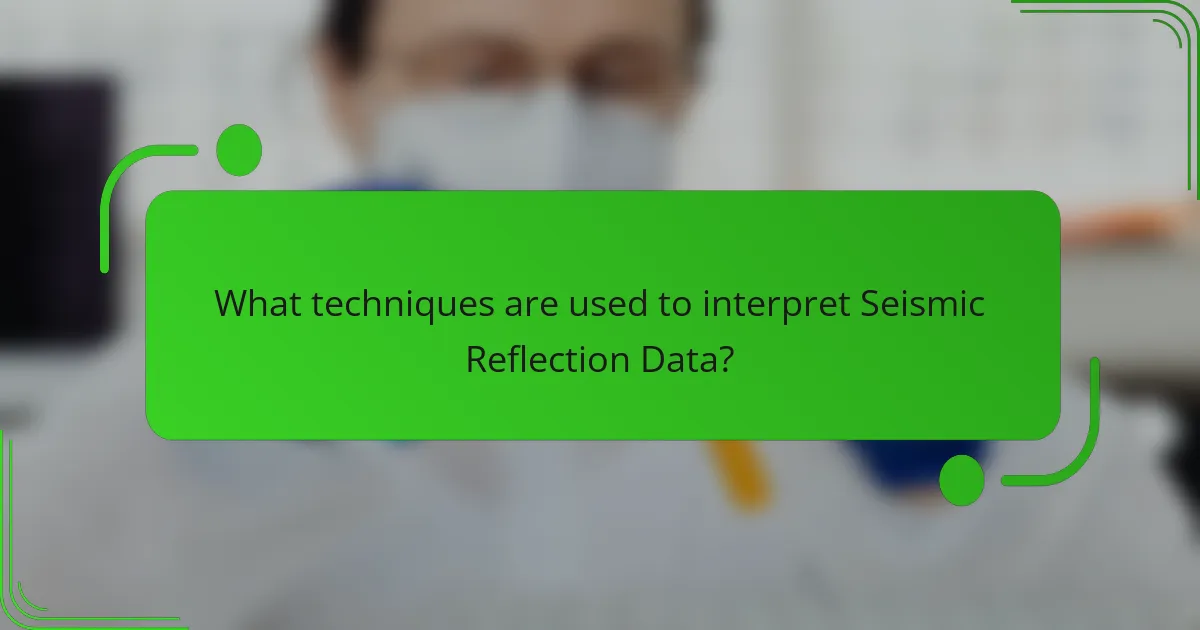
What techniques are used to interpret Seismic Reflection Data?
Common techniques used to interpret seismic reflection data include seismic stratigraphy, amplitude versus offset (AVO) analysis, and time-depth conversion. Seismic stratigraphy involves analyzing the layering and distribution of sedimentary deposits. AVO analysis assesses changes in amplitude with varying angles of incidence to identify gas reservoirs. Time-depth conversion translates time-based seismic data into depth, improving accuracy in subsurface modeling. Additionally, migration techniques enhance the positioning of seismic reflections. These methods are supported by advancements in computer algorithms and software, which facilitate detailed analysis and interpretation of complex data sets.
How do different interpretation techniques vary in effectiveness?
Different interpretation techniques vary in effectiveness based on their ability to accurately analyze seismic reflection data. Techniques such as time-domain analysis provide quick insights but may lack depth. Frequency-domain analysis, on the other hand, reveals more detailed subsurface features. Machine learning techniques can enhance predictive accuracy by identifying complex patterns in large datasets. Each technique’s effectiveness is also influenced by the quality of the input data and the geological context. For instance, advanced imaging techniques like inversion can significantly improve resolution in complex geological settings. Studies have shown that integrating multiple techniques often yields the best results in seismic interpretation.
What is the role of seismic inversion in data interpretation?
Seismic inversion is a technique used to convert seismic reflection data into a quantitative rock property model. This process helps in estimating subsurface properties such as porosity, saturation, and lithology. By interpreting seismic data through inversion, geoscientists can derive more accurate models of the earth’s subsurface. This enhances the understanding of geological formations and aids in resource exploration. Seismic inversion improves the resolution of subsurface images. It provides critical insights for hydrocarbon exploration and reservoir characterization. The method is essential for making informed decisions in geophysical studies.
How does amplitude variation with offset (AVO) analysis enhance interpretation?
Amplitude variation with offset (AVO) analysis enhances interpretation by providing insights into subsurface properties. AVO analysis measures changes in seismic reflection amplitude with varying source-receiver distances. This technique helps differentiate between fluid types in reservoirs. It can indicate the presence of gas or oil versus water. AVO responses are influenced by rock and fluid properties, making them valuable for predicting lithology. Studies show that AVO can improve the accuracy of resource estimation. For example, it has been successfully applied in the North Sea to identify hydrocarbon-bearing formations. AVO analysis thus aids in reducing exploration risks and optimizing drilling decisions.
What software tools are commonly used for interpreting Seismic Reflection Data?
Common software tools for interpreting seismic reflection data include SeisWorks, Kingdom Suite, and Petrel. SeisWorks is widely used for its comprehensive data visualization capabilities. Kingdom Suite offers advanced geological interpretation features. Petrel integrates seismic data with geological modeling. Other notable tools are GeoGraphix and Oasis montaj. These tools enhance the accuracy of subsurface interpretations. They are essential in oil and gas exploration. Their functionalities support data management and visualization.
How do these tools improve the accuracy of interpretations?
These tools enhance the accuracy of interpretations by providing precise data analysis. They utilize advanced algorithms to process seismic reflection data more effectively. This leads to improved identification of subsurface structures. Enhanced imaging techniques reduce noise and artifacts in the data. High-resolution outputs allow for better fault and reservoir characterization. Studies show that using these tools can increase interpretation reliability by up to 30%. Accurate interpretations lead to more informed decision-making in resource exploration. Ultimately, these tools minimize uncertainty in geological assessments.
What are the key features to look for in interpretation software?
Key features to look for in interpretation software include user-friendly interface, advanced visualization tools, and data integration capabilities. A user-friendly interface enhances accessibility for geoscientists with varying expertise. Advanced visualization tools allow for 3D modeling and detailed analysis of seismic data. Data integration capabilities enable seamless incorporation of multiple data types, such as geological and petrophysical data. Additionally, robust processing algorithms improve the accuracy of interpretations. Collaboration features facilitate teamwork among geoscientists. Compatibility with industry-standard formats ensures ease of data sharing. Finally, technical support and regular updates are essential for maintaining software effectiveness.
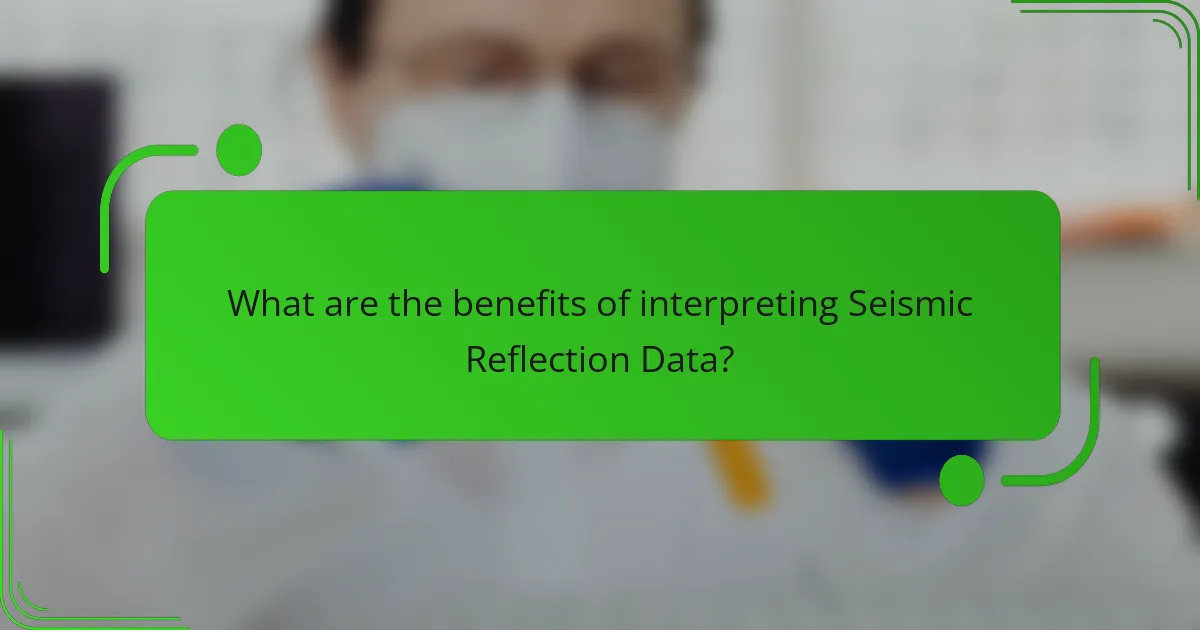
What are the benefits of interpreting Seismic Reflection Data?
Interpreting seismic reflection data offers several benefits. It enhances subsurface imaging, providing detailed information about geological structures. This data aids in identifying oil and gas reserves, which is crucial for energy exploration. Additionally, it helps in assessing natural hazards, such as earthquakes and landslides. Improved understanding of subsurface conditions can lead to safer construction practices. The technique also supports environmental assessments by revealing groundwater resources. Furthermore, seismic reflection data can assist in mineral exploration, contributing to resource management. Overall, these benefits make seismic reflection data a vital tool in geosciences.
How does Seismic Reflection Data interpretation impact decision-making in exploration?
Seismic reflection data interpretation significantly impacts decision-making in exploration by providing critical insights into subsurface structures. Accurate interpretation allows geologists and engineers to identify potential resource locations, such as oil and gas deposits. This data helps in assessing the viability of exploration sites, ultimately guiding investment decisions. For instance, the interpretation process can reveal fault lines and stratigraphic features that indicate the presence of hydrocarbons. Enhanced imaging techniques, like 3D seismic surveys, further improve the precision of these interpretations. Consequently, companies can minimize risks and optimize drilling locations based on solid geological evidence. Historical case studies show that effective seismic interpretation has led to successful discoveries, reinforcing its importance in exploration decision-making.
What cost savings can be achieved through effective interpretation?
Effective interpretation of seismic reflection data can lead to significant cost savings in exploration and production. By accurately identifying subsurface structures, companies can minimize drilling risks. This reduces the likelihood of dry wells, which can cost millions. Furthermore, effective interpretation allows for optimal resource allocation. It ensures that drilling efforts focus on the most promising areas. A study by the Society of Petroleum Engineers found that improved interpretation techniques can reduce exploration costs by up to 30%. This highlights the financial benefits of investing in advanced interpretation methods.
How does interpretation improve safety in geological assessments?
Interpretation improves safety in geological assessments by providing accurate insights into subsurface conditions. This process involves analyzing seismic reflection data to identify geological structures and potential hazards. Accurate interpretation allows for better risk management in construction and mining activities. For example, understanding fault lines and unstable soils can prevent accidents. Studies show that precise geological assessments reduce the likelihood of catastrophic failures. In fact, the International Society for Rock Mechanics reports that effective geological interpretation can decrease incident rates by up to 30%. Thus, interpretation is crucial for enhancing safety in geological contexts.
What industries benefit from the interpretation of Seismic Reflection Data?
The industries that benefit from the interpretation of Seismic Reflection Data include oil and gas exploration, mining, environmental assessment, and civil engineering. In oil and gas exploration, seismic data helps locate hydrocarbon reserves. Mining companies utilize this data to identify mineral deposits. Environmental assessments rely on seismic interpretation to evaluate subsurface conditions. Civil engineering projects use seismic data for site characterization and risk assessment. These applications illustrate the versatility of seismic reflection data across various sectors.
How is Seismic Reflection Data utilized in oil and gas exploration?
Seismic reflection data is utilized in oil and gas exploration to identify subsurface geological structures. This data helps geologists map the location of oil and gas reserves. Seismic waves are generated and reflected back from different rock layers. The time it takes for these waves to return is recorded and analyzed. This analysis reveals the depth and shape of geological formations. It also assists in determining the properties of the rocks, such as porosity and permeability. Accurate interpretation of this data can lead to more efficient drilling locations. Studies have shown that seismic reflection techniques significantly reduce exploration costs and risks.
What role does Seismic Reflection Data play in civil engineering projects?
Seismic Reflection Data plays a crucial role in civil engineering projects by providing detailed subsurface information. It helps engineers identify geological structures and assess soil properties. This data is essential for site characterization before construction. Accurate subsurface mapping reduces risks associated with ground instability. Engineers use this information to design foundations and other structures effectively. Studies show that projects utilizing seismic data experience fewer unexpected complications. The American Society of Civil Engineers highlights its importance in minimizing project delays. Overall, seismic reflection data enhances safety and efficiency in civil engineering.
What are some case studies demonstrating successful interpretation of Seismic Reflection Data?
Case studies demonstrating successful interpretation of seismic reflection data include the North Sea oil fields and the Gulf of Mexico. In the North Sea, seismic reflection data led to the discovery of significant hydrocarbon reserves. Detailed interpretations revealed complex fault systems and stratigraphic traps. This resulted in successful drilling campaigns and increased production rates.
In the Gulf of Mexico, seismic data interpretation helped identify subsalt reservoirs. Advanced imaging techniques clarified geological features obscured by salt layers. This interpretation enabled efficient exploration and development of these challenging resources. Both cases underline the importance of seismic reflection data in resource identification and extraction.
What lessons were learned from notable case studies in oil exploration?
Notable case studies in oil exploration have revealed several key lessons. First, effective interpretation of seismic reflection data is crucial for successful drilling. For instance, the North Sea case highlighted the importance of integrating geological models with seismic data. This integration improved accuracy in predicting reservoir locations. Second, collaboration among multidisciplinary teams enhances exploration outcomes. The Gulf of Mexico case demonstrated that combining geophysicists, geologists, and engineers led to better decision-making. Third, understanding subsurface complexities is vital. The example from the Niger Delta showed that overlooking geological anomalies can result in costly dry wells. Lastly, continuous technological advancements in seismic imaging have proven beneficial. The use of 4D seismic monitoring in Brazil improved reservoir management and recovery rates. These lessons emphasize the significance of data integration, teamwork, geological awareness, and technology in oil exploration.
How have civil engineering projects benefited from Seismic Reflection Data interpretation?
Civil engineering projects have benefited from Seismic Reflection Data interpretation by enhancing subsurface exploration. This technique provides detailed images of geological structures. It allows engineers to assess soil stability and identify potential hazards. Accurate data reduces the risk of construction failures. For instance, projects in earthquake-prone areas utilize this data to design resilient structures. Studies show that incorporating seismic data can lower construction costs by preventing unforeseen complications. Overall, seismic reflection interpretation improves project safety and efficiency.
What best practices should be followed when interpreting Seismic Reflection Data?
Best practices for interpreting seismic reflection data include ensuring high-quality data acquisition. This involves using appropriate survey design and equipment. Accurate processing techniques are essential to enhance data clarity. Applying advanced algorithms can improve signal-to-noise ratios.
Collaboration among geophysicists, geologists, and engineers enhances interpretation accuracy. Utilizing software tools for visualization aids in understanding complex subsurface structures. Regular calibration of equipment ensures consistent data quality. Continuous training in the latest interpretation techniques keeps professionals updated.
Documentation of interpretation processes is crucial for reproducibility. These practices lead to more reliable geological insights and informed decision-making in exploration and development projects.
Interpreting Seismic Reflection Data is the primary focus of this article, which explores techniques, benefits, and case studies related to this geophysical method. The article provides an overview of how seismic waves are generated, collected, and analyzed to map subsurface geological structures, highlighting the importance of technologies such as geophones and software tools in data interpretation. Key insights include the role of seismic reflection data in resource exploration, its impact on decision-making in various industries, and best practices for ensuring accurate geological assessments. Additionally, case studies illustrate successful applications of seismic reflection techniques in oil and gas exploration and civil engineering projects.
